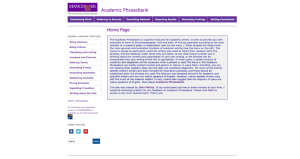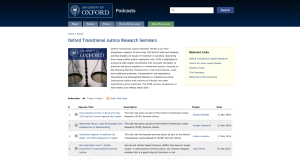 |
January 24, 2020 Volume 26, Number 2 |
General Interest |
Theme: Justice and Society |
Revisited |
In the News |
General InterestBack to Top | |
 |
|
 |
|
 |
|
 |
|
 |
|
Theme: Justice and SocietyBack to Top | |
 |
|
 |
|
 |
|
 |
|
 |
|
RevisitedBack to Top | |
 |
|
In the NewsBack to Top | |
Australia's Fires Continue to Devastate Biodiversity and Communities | |
|
Australia's deadly wildfires are showing no signs of stopping. Here's what you need to know Enormous 'Megafire' In Australia Engulfs 1.5 Million Acres Everyday Australians step up as relentless wildfires push country to the brink A statement about the 480 million animals killed in NSW bushfires since September Australia fires: A visual guide to the bushfire crisis Australia Must Listen to Traditional Custodians of the Land The devastating effects of Australia's wildfires have been dominating headlines since their inception in September. This month, the tragic consequences skyrocketed. The extent of these fires is hard to conceptualize, as millions of hectares have been ablaze "an area larger than the countries of Belgium and Denmark combined." The fires are being chalked up to a variety of causes, including weather patterns, climate change, and arson. So far, the fires have killed over two dozen individuals, destroyed thousands of homes, and caused astronomical biodiversity detriments. For example, Christopher Dickman, a professor at the University of Sydney, estimates that over 800 million animals have perished in the bushfires, and over one billion have been impacted in some way by their effects. Moreover, the fires have had a particularly devastating effect on indigenous communities, as Aboriginal land management practices have often been overlooked by Westernized burning practices. Unfortunately, since Australia is on the front-end of its warmest months, there is no immediate end to the destruction in sight. As the fires continue to burn, national and global leaders, celebrities, and ordinary citizens have rallied to support rescue efforts. [EMB] Readers interested in staying up-to-date on the fires should explore the first link, which leads to an article written by Jessie Yeung for CNN that continues to be updated with the latest information on the locations, causes, and damages of the blaze. The end of the article also includes a list of agencies interested readers can consider donating to to support relief efforts. The second link leads to an article written by Scott Neuman for National Public Radio, detailing some of the detrimental effects of the fires and linking to a short video provided by NASA, which uses "satellite animation" to show the scope of the fires' smoke. The third link leads to a story written by Stephen Easton for NBC News that provides some hope amid news of the destruction by describing the selfless and courageous work of individuals rallying to bring aid to affected persons and areas. The fourth link leads to a statement from the University of Sydney detailing how Professor Dickman arrived at his conclusions about the number of animals impacted by the fires. Readers interested in a visual representation of the causes and context of Australian bushfires may want to explore the fifth link, which leads to a collection of images and charts published on BBC News. Finally, to learn more about Aboriginal land management practices and the effects of the fires on Indigenous Australians check out the sixth link, which leads to an article published in Cultural Survival by Laura Simpson Reeves that links to several other sources about indigenous conservation efforts in Australia. | |





